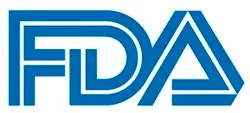News
Article
FDA Updates PDUFA Date of BLA for Subcutaneous Nivolumab in Advanced or Metastatic Solid Tumors
Author(s):
The FDA has updated the PDUFA target action date for the BLA for subcutaneous nivolumab in advanced or metastatic solid tumors.

The FDA has updated the Prescription Drug User Fee Act (PDUFA) target action date for the biologics license application (BLA) seeking the approval of nivolumab (Opdivo) co-formulated with Halozyme’s proprietary recombinant human hyaluronidase (rHuPH20; subcutaneous nivolumab) for the treatment of adult patients eligible for previously approved solid tumor nivolumab indications as monotherapy, monotherapy maintenance following completion of nivolumab plus ipilimumab (Yervoy) combination therapy, or in combination with chemotherapy or cabozantinib (Cabometyx).1
The updated target action date is December 29, 2024. When the FDA accepted the BLA on May 6, 2024, the original PDUFA goal date was February 28, 2025.2
If approved, subcutaneous nivolumab would represent the first subcutaneous PD-1 inhibitor approved in the United States.1
The BLA is supported by data from the phase 3 CheckMate-67T trial (NCT04810078), which evaluated subcutaneous nivolumab vs the intravenous (IV) formulation in patients with advanced or metastatic clear cell renal cell carcinoma (ccRCC) who had received prior systemic therapy. Findings showed that subcutaneous nivolumab demonstrated noninferiority to IV nivolumab in time-averaged serum concentration over the first 28 days (Cavgd28) with a geometric mean ratio of 2.098 (90% CI, 2.001-2.200). Furthermore, subcutaneous nivolumab showed noninferiority for minimum serum concentration at steady state (Cminss), with a geometric mean ratio of 1.774 (90% CI, 1.633-1.927).3
Patients treated with subcutaneous nivolumab (n = 248) experienced an overall response rate (ORR) of 24.2% per blinded independent central review (BICR) assessment compared with 18.2% for patients given the IV formulation (n = 247; relative risk ratio, 1.33; 95% CI, 0.94-1.87). The median progression-free survival (PFS) per BICR assessment was 7.23 months for subcutaneous nivolumab vs 5.65 months for the IV formulation.
Regarding safety, the toxicity profile of subcutaneous nivolumab was consistent with the known profile of the IV formulation. Notably, 8.1% of patients treated with the subcutaneous version experienced local injection site reactions. The rate of grade 3/4 adverse effects (AEs) was 35.2% for evaluable patients treated with subcutaneous nivolumab (n = 247) vs 40.8% for those given the IV version (n = 245). The rates of treatment-related AEs (TRAEs) were 9.7% for subcutaneous nivolumab and 14.7% for IV nivolumab, and the rates of serious AEs were 21.1% and 22.9%, respectively. Serious TRAEs occurred in 6.5% of patient in both arms.
CheckMate-67T was an open-label, randomized, noninferiority trial that enrolled patients at least 18 years of age with histologically confirmed RCC with a clear cell component. The study included patients with sarcomatoid features. Patients needed to have locally advanced RCC that was not amenable to curative surgery or radiation, or metastatic RCC.4
Other key inclusion criteria consisted of measurable disease per RECIST v1.1 criteria; no more than 2 prior lines of systemic therapy; treatment intolerance or disease progression within 6 months prior to randomization; and a Karnofsky performance status of at least 70.
Patients were excluded if they had untreated, symptomatic central nervous system metastases; a concurrent malignancy at screening or a history of an active prior malignancy within 2 years before enrollment; active, known, or suspected autoimmune disease; or prior treatment with an anti–PD-1, –PD-L1, or –CTLA-4 antibody, or any other agent targeting T-cell costimulation or checkpoint pathways.
Patients were randomly assigned to receive subcutaneous nivolumab or IV nivolumab. Cavgd28 and Cminss served as the trial’s co-primary end points. Secondary end points consisted of ORR, other pharmacokinetics, safety, disease control rate, duration of response, time to response, PFS, and overall survival.
References
- Bristol Myers Squibb announces updated action date by the U.S. Food and Drug Administration for subcutaneous nivolumab (nivolumab and hyaluronidase). News release. Bristol Myers Squibb. May 21, 2024. Accessed May 21, 2024. https://news.bms.com/news/details/2024/Bristol-Myers-Squibb-Announces-Updated-Action-Date-by-the-U.S.-Food-and-Drug-Administration-for-Subcutaneous-Nivolumab-nivolumab-and-hyaluronidase/default.aspx
- U.S. Food and Drug Administration accepts Bristol Myers Squibb’s application for subcutaneous nivolumab (nivolumab and hyaluronidase). News Release. Bristol Myers Squibb. May 6, 2024. Accessed May 21, 2024. https://news.bms.com/news/details/2024/U.S.-Food-and-Drug-Administration-Accepts-Bristol-Myers-Squibbs-Application-for-Subcutaneous-Nivolumab-nivolumab-and-hyaluronidase/default.aspx
- Subcutaneous nivolumab (nivolumab and hyaluronidase) shows noninferiority compared to intravenous Opdivo (nivolumab) in advanced or metastatic clear cell renal cell carcinoma in CheckMate -67T trial. News release. Bristol Myers Squibb. January 27, 2024. Accessed May 21, 2024. https://news.bms.com/news/details/2024/Subcutaneous-Nivolumab-nivolumab-and-hyaluronidase-Shows-Noninferiority-Compared-to-Intravenous-Opdivo-nivolumab-in-Advanced-or-Metastatic-Clear-Cell-Renal-Cell-Carcinoma-in-CheckMate--67T-Trial/default.aspx
- A study of subcutaneous nivolumab versus intravenous nivolumab in participants with previously treated clear cell renal cell carcinoma that is advanced or has spread (CheckMate-67T). ClinicalTrials.gov. Updated March 1, 2024. Accessed May 21, 2024. https://classic.clinicaltrials.gov/ct2/show/NCT04810078









